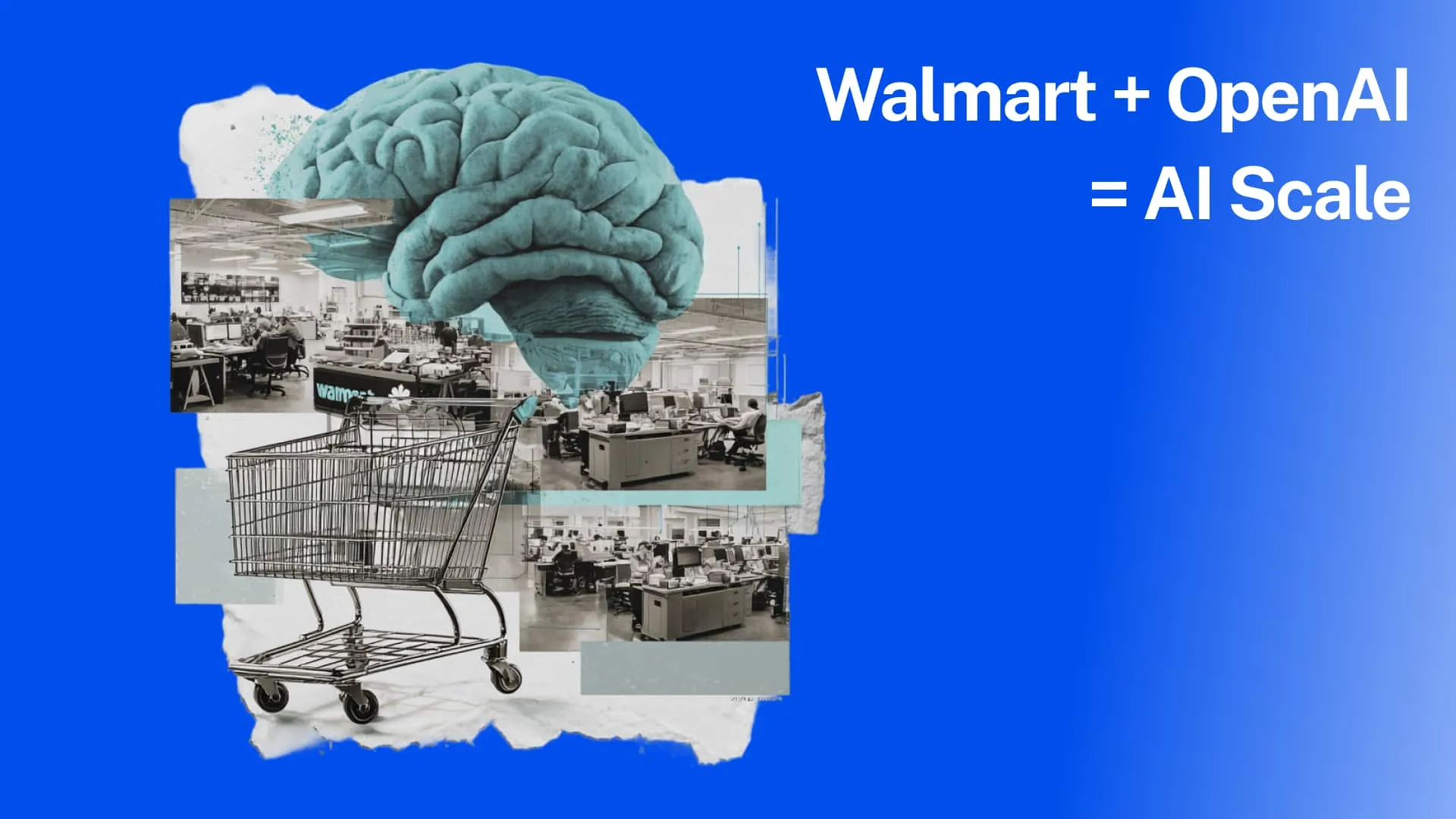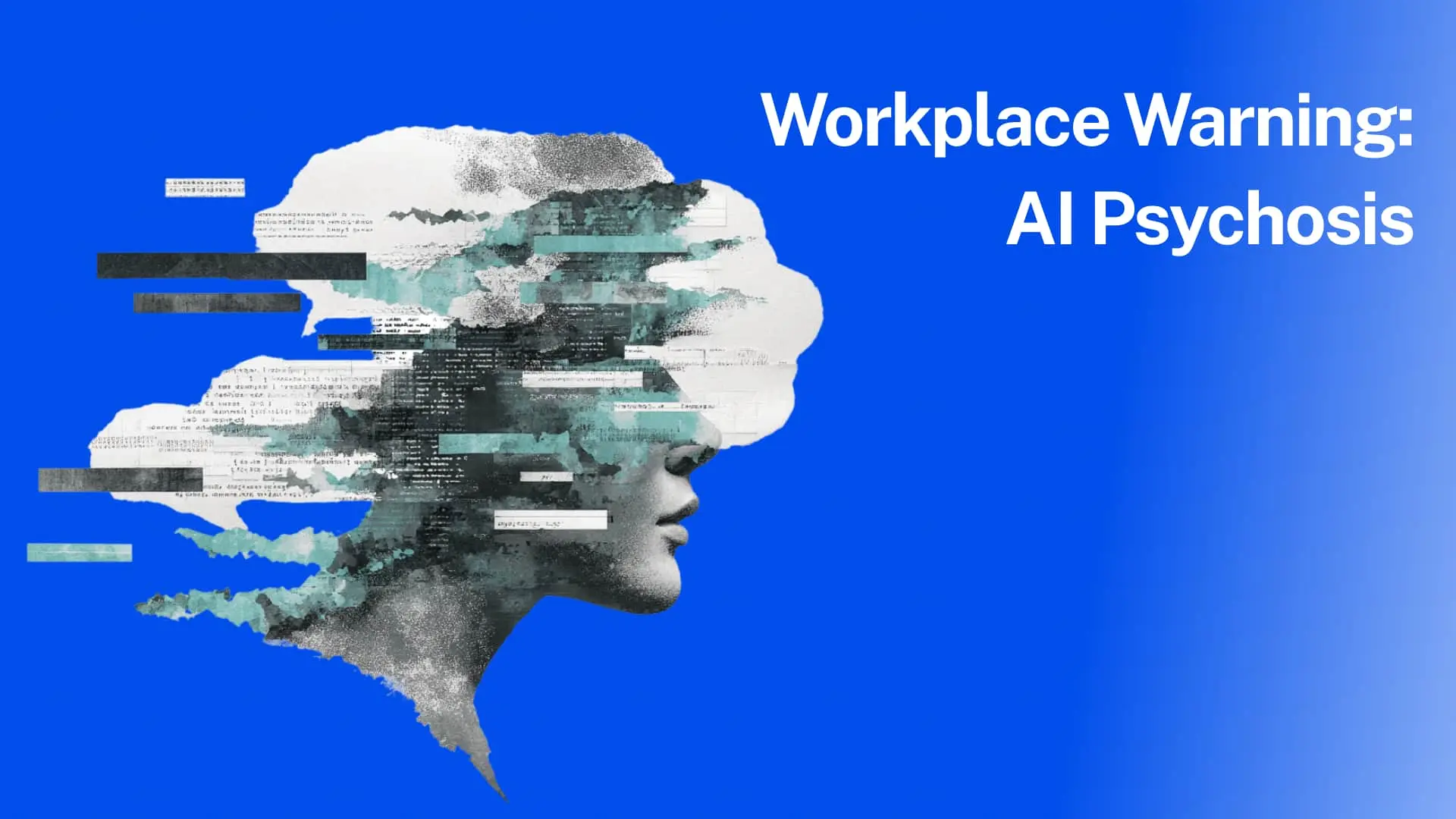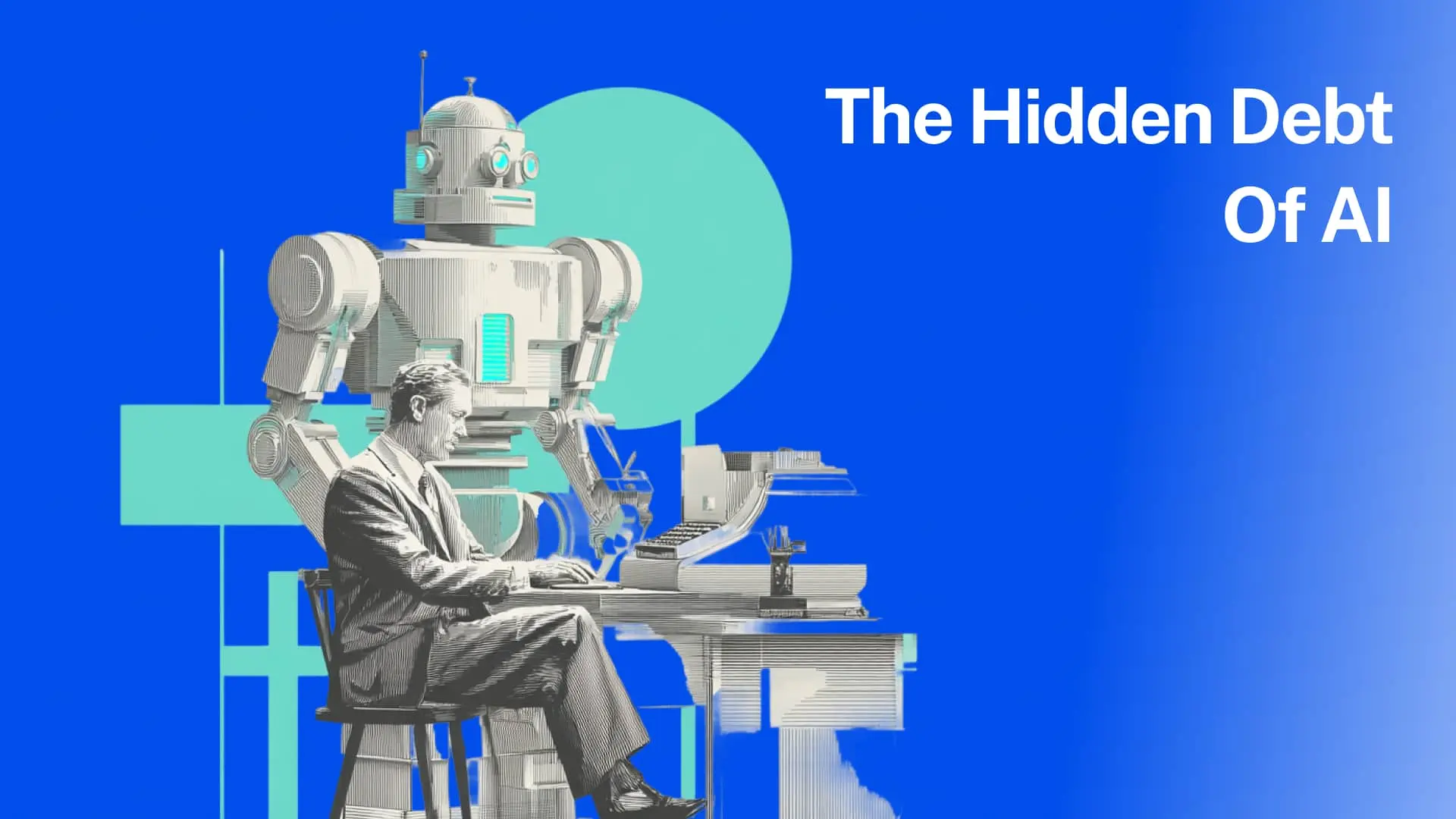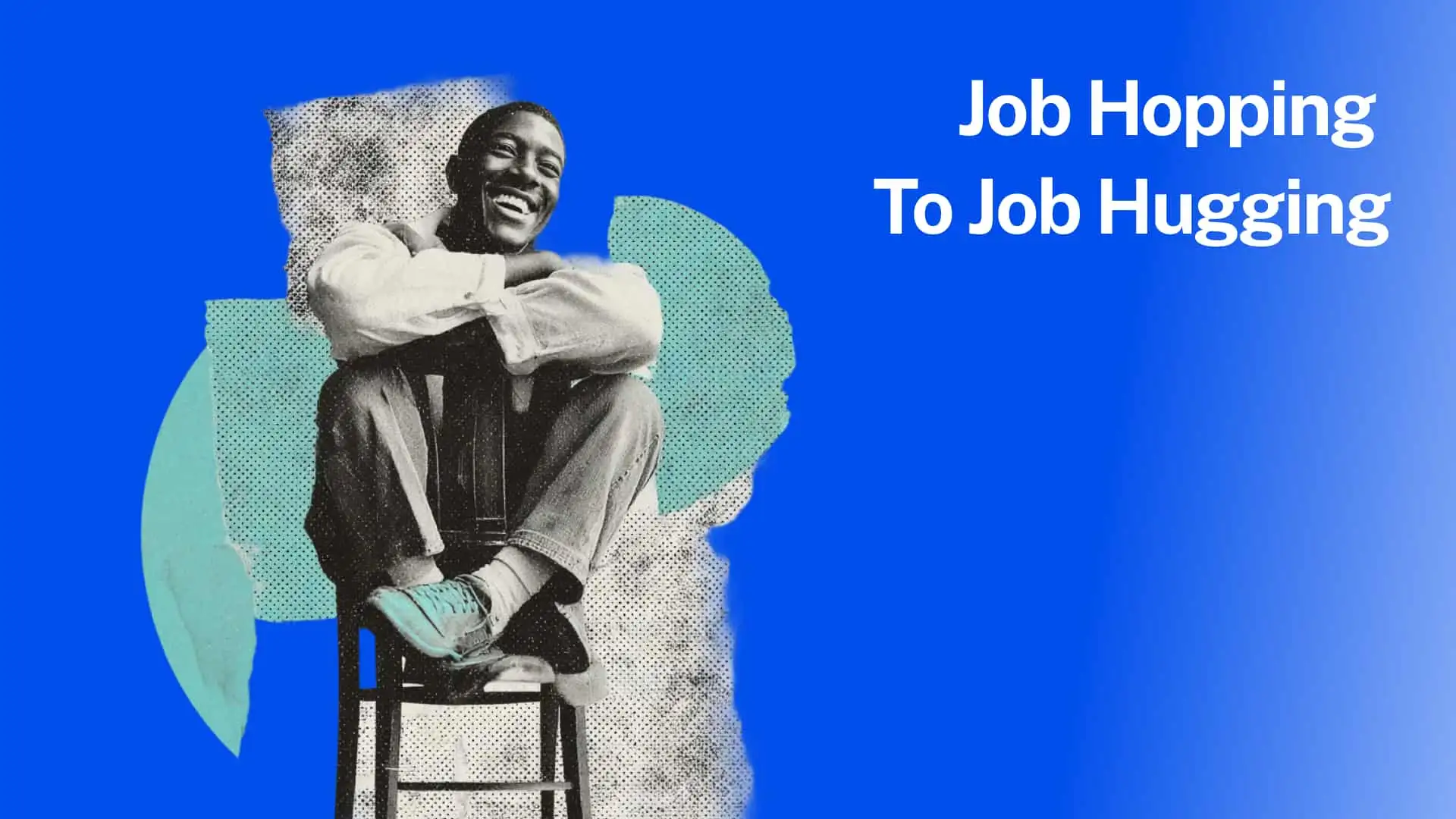As a follower of this newsletter, I know you’re amongst the most innovative in our People industry.
As such, you may have already heard what’s been making waves in the news: Artificial intelligence and, particularly, Generative AI and a new tool called ChatGPT.
(Note: AI is developing rapidly. Take a look at our six must-know AI trends in 2024. And OpenAI is getting ready to release ChatGPT 5. Check out our guide to its new features.)
While AI is nothing new to tech-savvy folks, this technology has greatly improved in the past year. Especially in the past few months, a new category of AI tools called “generative AI” made it easy to write, design, and more simply by you giving the tools prompts. Some examples of AI in the Workplace include:
- ChatGPT: researches and writes copy for you. Use our Prompt Generator to create 10x more powerful prompts and see more value from your ChatGPT usage.
- Lex, Canva Magic Write, Copy.AI: helps you write better
- Dall-E-2: creates images and art from your inputs
Don't waste another minute. See our guide to the best free ai tools (for work) or check out these must-use ai websites.
With these tools being praised for their writing and design abilities and now ChatGPT taking the world by storm, I can’t help but wonder what implications it will have on Human Resources and how to use AI effectively, as well as what jobs AI will replace.
Especially for you as People Innovators, it’s important to take note of this massive opportunity.
Gartner for HR called generative AI one of the top strategic technology trends of 2022. And Wharton professor Ethan Mollick states in Harvard Business Review: “The businesses that understand the significance of this change — and act on it first — will be at a considerable advantage.”
In short, learn these tools now and leapfrog the competition.
What is Generative AI, and what is ChatGPT?
Generative AI are AI-powered platforms that can create new things based on your inputs. It can create new content ranging from a school essay to social media content. Taking AI from something 'behind the scenes' into a tool we can use to make our daily work easier is a massive change.
Let’s start with the most recent breakthrough: ChatGPT.
(Update: OpenAI is getting ready to release ChatGPT 5. Check out our guide to its new features)
ChatGPT is a chatbot developed by a startup called OpenAI. ChatGPT, which stands for Chat Generative Pre-trained Transformer, is built on OpenAI’s language models and has been made even smarter with additional learning methods.
Give it a question, and it will answer based on more data than any human can ever process.
Doesn’t Google does this too? Well, no. Google unlocks information by matching your search keywords to web pages containing information about that topic.
ChatGPT gives you a full answer in human(-like) language rather than just links. It’s like talking to someone who has read the entire internet.
It does this so well that you can even give it assignments to write on your behalf. The sales email below is an example (see more on Reddit and Twitter.) How could this impact us, especially in Employee Engagement, Employer Branding, and Internal Communications?

A groundbreaking innovation
The New York Times called ChatGPT "the best artificial intelligence chatbot ever released to the general public."
In The Atlantic's "Breakthroughs of the Year" for 2022, Derek Thompson included ChatGPT as part of "the generative-AI eruption" that "may change our mind about how we work, how we think, and what human creativity is.”
Or, to say it differently:
The rise of generative AI has the potential to be a major game-changer for businesses. This technology, which allows for the creation of original content by learning from existing data, has the power to revolutionize industries and transform the way companies operate.
By enabling the automation of many tasks that were previously done by humans, generative AI has the potential to increase efficiency and productivity, reduce costs, and open up new opportunities for growth. As such, businesses that are able to effectively leverage the technology are likely to gain a significant competitive advantage.
Is this well said? Surprise: it’s written by ChatGPT itself!
The tool is so powerful that it’s already “raising alarm over student cheating.” Now that using artificial intelligence is as easy as entering a question in the ChatGPT website, students can write sophisticated essays that imitate real academic work.
No wonder ChatGPT is already highly successful. OpenAI made ChatGPT available for free public testing on November 30. It took just five days to amass one million users. They’re clearly on to something!
What about HR specifically?
In HR, People Operations, and Employee Engagement, we write A LOT. Tools like ChatGPT could take this work out of our hands.
Let’s look at a few potential applications along the employee lifecycle.
Recruiting
Recruiting thought leader Glen Cathey 💡 looked at the opportunities for leveraging ChatGPT for talent acquisition.
His findings confirm that as ChatGPT is still in its early days and can only write generic emails, job descriptions, interview prompts, and dialogues based on his inputs, such results are still impressive.
Here’s an example of a prompt he gave ChatAI and the impressive output. Imagine the time it would have taken to write this yourself.

Glen highlights the quality of the responses, stating they’re as good as those made by people he has seen. He suggests that ChatGPT is a powerful tool to improve copywriting content on social media, such as LinkedIn posts (maybe this one, you never know.)
Donna Svei, a resume writer for senior executives, highlighted the power of ChatGPT in job interview preparation for candidates.
“As a former recruiter, I can tell you that the most challenging part of behavioral interviewing is getting candidates to share stories about SPECIFIC experiences. Fortunately, ChatGPT *knows* how to answer behavioral questions and can teach job seekers by example.”
She gave ChatGTP the prompt to write out a conversation that one could expect in a behavioral interview.

This is an interesting take and could easily be applied in any situation where we would normally use roleplay to practice something, like leadership training.
Employee Engagement
We know engaged employees are more productive, stay with us longer, and help us recruit better talent. So how do we engage our teams, especially now that we’re often working from different places on different days?
Generating great ideas to engage teams, especially when we want to make those efforts efficient and effective, is challenging.
Tools like ChatGPT can help by generating lists of ideas and detailed instructions for executing them. For example, team-building ideas. I asked ChatGPT to give us some ideas for team building. Here’s what it replied:

The magic of ChatGPT comes in the fact that you can continue the conversation from here. Imagine it like an assistant that researched for you, but now that you get the results, you need to refine it.
In this case, I spotted an issue with the upcoming budget-tight 2023 in mind: some of these activities would be great but are too expensive. So I told ChatGPT: “I don't want to do anything that costs money.” Here’s how it replied:

I like the idea of the movie night, so I asked how to organize a good movie night at work:

Going from no idea to a clear action plan for an engaging activity shows the power of using AI to boost employee engagement.
And it doesn’t stop there! Once you’ve selected an idea, AI can help you write successful communications. This brings us to:
Internal Communications
Ever had writer’s block when writing the millionth internal communication?
Did you stare at a blank page with no inspiration for writing?
AI can come to the rescue! Simply give it a prompt and watch the message being written. As per this helpful article on Inc, this includes:
- Coming up with an idea for the content
- Generating the first draft
- Writing a title
- Helping to do research
- Shorten text
Building on the example above, I asked ChatGPT to write an invitation for the team movie night:

Again, the power of Generative AI is that I can now improve this with a simple prompt. I feel like for my team, the tone doesn’t have to be so formal, so I asked ChatGPT to write it with more excitement. No problem:

Even if you don’t want to concede copywriting to the AI fully, the writing tool @Lex page helps answer questions while you’re writing your content, as seen in these examples:

The same goes for images. Previously, you may have Googled “team movie night images,” briefed a designer (and waited, and waited), or got into Canva yourself. Now, you can describe what kind of visual you want, and the AI will create it for you.
Here's what image-generating AI Dall-E created for me when I asked for images about a Team Movie Night. I decided that I wanted something in "cartoon style," so I included that in my prompt. Here are the results:

It's hard to believe that these illustrations were generated in mere seconds, the same time it would have taken for a Google Search to find existing images. These are completely new images that never existed until I gave Dall-E the prompt!
From this set of options, I particularly liked the first illustration. Like ChatGPT, you can continue the conversation and go deeper in a certain direction. I asked Dall-E to show me a few more options ("variations") for that first image. Again, it was ready in seconds:

From there, I could give it additional prompts to fine-tune it further:
- This image but without the dark background
- This image but set in New York
- This image but with five people instead of four.

Segmentation
Iterating on our final text or images means we can create even more.
Normally, we write one-size-fits-all communications. From marketing, we know that personalized messages are much more impactful. Per McKinsey & Company, personalization has been proven to impact purchases significantly. It makes sense to personalize our internal communications as well.
Creating those personalized messages, however, is a laborious process.
With AI, we can better understand individual internal target audiences and create more personalized messages. Since rewriting in a different tone or for a different level of seniority now only takes seconds, the effectiveness and efficiency of our communications will improve greatly.

The above model from MetLife shows how we can better target employees and then craft messaging that works for them. Their research proves that segmenting employees improves recognition, impact, and communication.
Once you’ve crafted the main message, the only thing left is to tell ChatGTP to “rewrite it in a more formal tone” or “optimize the language for senior executives.”
Continuing on our previous ChatGPT test, I thought to give it a challenge and asked to rewrite the movie night invite for working parents. I was truly delighted by the thoughtfulness of making the copy fit the target audience and being considerate about the need for childcare during the movie night.

Employer Branding
Besides Internal Communications, a lot of our writing and designing is for Employer Branding purposes. As highlighted before, generating ideas for social content, writing the content, generating visuals to go along with those posts, and more can now be ‘outsourced’ to AI.
I asked ChatGPT to write a recap of our movie night as Employer Branding content. It considered all the important elements of an employer branding post, although I did remove the Best Regards sign-off.

Pocket HRMS raises a good point by highlighting that the use of AI itself can also improve your Employer Brand:
“The reasons mentioned above help engage the employees effectively, which in turn helps improve the quality of their work. As a result, the quality of the products or services provided by the company improves considerably, resulting in an improved brand and employer brand.”
HR Services
It’s great that we have AI’s support in the creative elements of our jobs. But it also tackles the more mundane parts of what we do.
A lot of the manual support work that HR is still doing can be automated in a human-esque way. AI can internalize frequently asked questions about policies and processes and serve it up to the employee in a chat window.
With a chatbot handling employee queries, HR is free to focus on where we can add real human value.
Similarly, AI can take over much of the manual analysis work we’re putting into our people analytics.
So, will I still have a job?
In short, yes. At least for now.
For example, in Employee Engagement, while AI can help generate ideas, write copy, and invite employees, those ideas still need to be implemented. The experience of running an employee-centric event still needs hands-on experience from a human point of view.
Secondly, only some ideas generated will work for specific cases, so contextual information is still essential. Every company is unique, with its own culture and communication style, so “generalized” ideas and copy probably won’t be the best choice.
As McKinsey shares, “Individual company norms and values aren’t reflected. Companies must adapt the technology to incorporate their culture and values, requiring technical expertise and computing power beyond what some companies may have ready access to.”
Well, such shortcomings are still easily recognizable, at least for now.
What’s amazing about AI is that it can learn very quickly from data. I hypothesize that providing machine learning with robust data sets will eventually teach AI to identify such nuances in those specific situations. Give it some more time and money, and AI will improve vastly.
Sam Altman, OpenAI’s CEO, is straightforward about the company’s future endeavors:
“We already know how to make it ten times better. We know there are logical reasoning tasks that it messes up. We’ll go down a list of things and create a new version that fixes all of the current problems.”
Thirdly, many experts agree that while AI can cover the mundane elements of creators’ daily work, we still need the human touch of creativity. To many AI researchers, creativity is not only about the results but the creative process itself, something AI cannot replicate.
Using ChatGPT’s own words in response to John Tan of Education & Catastrophe:
“…it is unlikely that AI will replace most jobs. This is because many jobs require human creativity, intuition, and empathy, which AI cannot yet replicate. […] Human skills are often difficult to define and measure. Still, they are essential for many tasks that require complex problem-solving, critical thinking, and the ability to understand and respond to the needs of others…”
In an interview with Channel News Asia, leading researcher Toby Walsh agrees. “There are lots of things it can do, but it also doesn't understand completely what it's talking about.” He shares that ChatGPT “is not understanding like you and I understand what it's saying. It’s just saying things that are probable.”
McKinsey highlights this phenomenon too: “ChatGPT, for example, sometimes “hallucinates,” meaning it confidently generates inaccurate information in response to a user question and has no built-in mechanism to signal this to the user or challenge the result.”
Lex, another AI tool, acknowledges its limited knowledge and issues caution. Whenever asking for suggestions, it reminds you, "FYI—I’m good at research questions, but sometimes I make things up that aren’t true, and I don’t know anything that happened after June 2021. Double-check anything I say.”
Human and HR
Economist Paul Krugman thinks that ChatGPT can affect the demand of knowledge workers. I asked my friend Sam Neo, who has been working on an HR-focused AI writing tool called Storybuddy, and he has a more nuanced take.
In his words, “AI is here to co-create, not replace us.” I agree and think the above “Movie Night” examples showcase this.
Sam argues that the rise of AI is an opportunity for us to find different ways to work with it and upgrade ourselves: “We need to embrace AI and use it to our advantage.
With AI, we can automate repetitive tasks, freeing our time to focus on more important things. We can also use AI to make better decisions by analyzing data and trends we would otherwise miss.
Like it or not, communication is key for us to get things done and progress in life. AI in this space will be key to leveling the playing field and helping more people access opportunities they never had.
With the advent of new technologies, we must learn to adapt and change with the times. We must be proactive and embrace new ideas to help us move forward.
We can use AI to improve our skills and abilities. So let's not be afraid of AI. Embrace it and use it to our advantage.
Final words
It’s still early, so we can’t say anything for sure, but the signs are here.
Some fields will be changed for good, and technology will do what it’s created to do throughout history: tools to shoulder the work for us, allowing us to focus on our “human skills.”
One thing’s for certain, though: we will watch its trajectory with great interest.
As Glen Cathey wrote, “I can guarantee no one has thought of all potential use cases yet (good and bad). In fact, while it certainly has limitations, ChatGPT's full potential can only be truly explored through creative requests and inquiries. In a sense - its limits are your limits.”
I’d love to hear from you: have you tried any AI tools in your work, and (how) has it helped you?
If you want to get started, Ollie Forsyth at Antler produced an overview for you to try:

Or you can explore our tips for AI topics here: Top AI Websites, How to use AI For Work, 7 Free AI Tools, AI Productivity Tools, AI Recruiting, AI Accounting, and 10 AI Marketing Tools. Want to learn more about AI? Check out our guide to AI in the Workplace, and AI in Management
Have a great (holiday) week,
Daan











